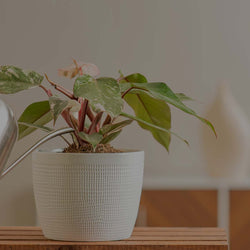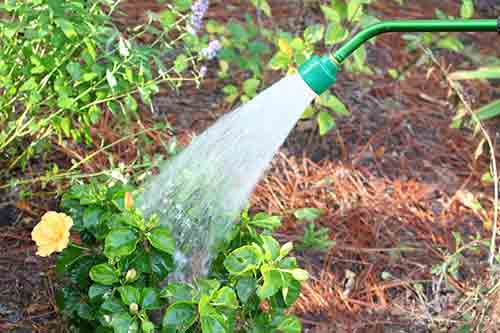Are you afraid of orchids? Do you worry that you won’t be able to care for one properly? Do they seem rather exotic and hard to care for? Well, it may surprise you, but orchids are one of the easiest houseplants on the planet. They don’t need to be fussed over and they’ll reward you with color for at least a month or more. Plus, with proper care they’ll bloom again every year. Here are 5 easy-care tips to keep your orchids in top form.

1. Choose the Easiest Orchids
Orchids come in a variety of species and varieties. Moth orchids (Phalaenopsis) are the most common and probably the easiest to maintain. Until you feel comfortable as an orchid parent, stick with Moth orchids which have broad, butterfly shaped blooms, and large, flat leaves. Moth orchids come in a huge variety of colors as well as dwarf and standard sizes.
2. Place in the Right Light
Place your orchid in a spot with bright, indirect light. Although they can tolerate darker conditions, they do best in brighter conditions. They don’t like direct sunlight, though, so if a sunny window is your only option, protect them from the rays of the sun with a sheer curtain.
3. Water the Roots
In the wild, orchids grow in treetops clinging to the bark of trees. That’s why they are sold in pots filled with loose bark or moss (never try to plant an orchid in the soil). Run water over the roots of the plants for several minutes every week to 10 days. Although they are jungle natives, they are surprisingly drought tolerant and need to be allowed to dry out between waterings. If your orchid is kept constantly wet it won’t be happy.
4. Offer Humidity
Orchids prefer humid conditions, especially during the winter when your home has drier air, so it helps to set your plant on a pebble-filled tray filled with water (the pot should sit on top of the stones, not in the water). As the water in the tray evaporates it will increase the humidity around your orchid. Misting your orchids is not necessary. Did you know that orchids may help you sleep better? Check it out.
5. Give Your Orchids a Snack
Feed your orchids with an orchid fertilizer several times during the spring and summer. Follow the label directions for application rates and times. And, once all the flowers fade, clip off the empty bloom stalk near its base.
Written by Doug Jimerson









